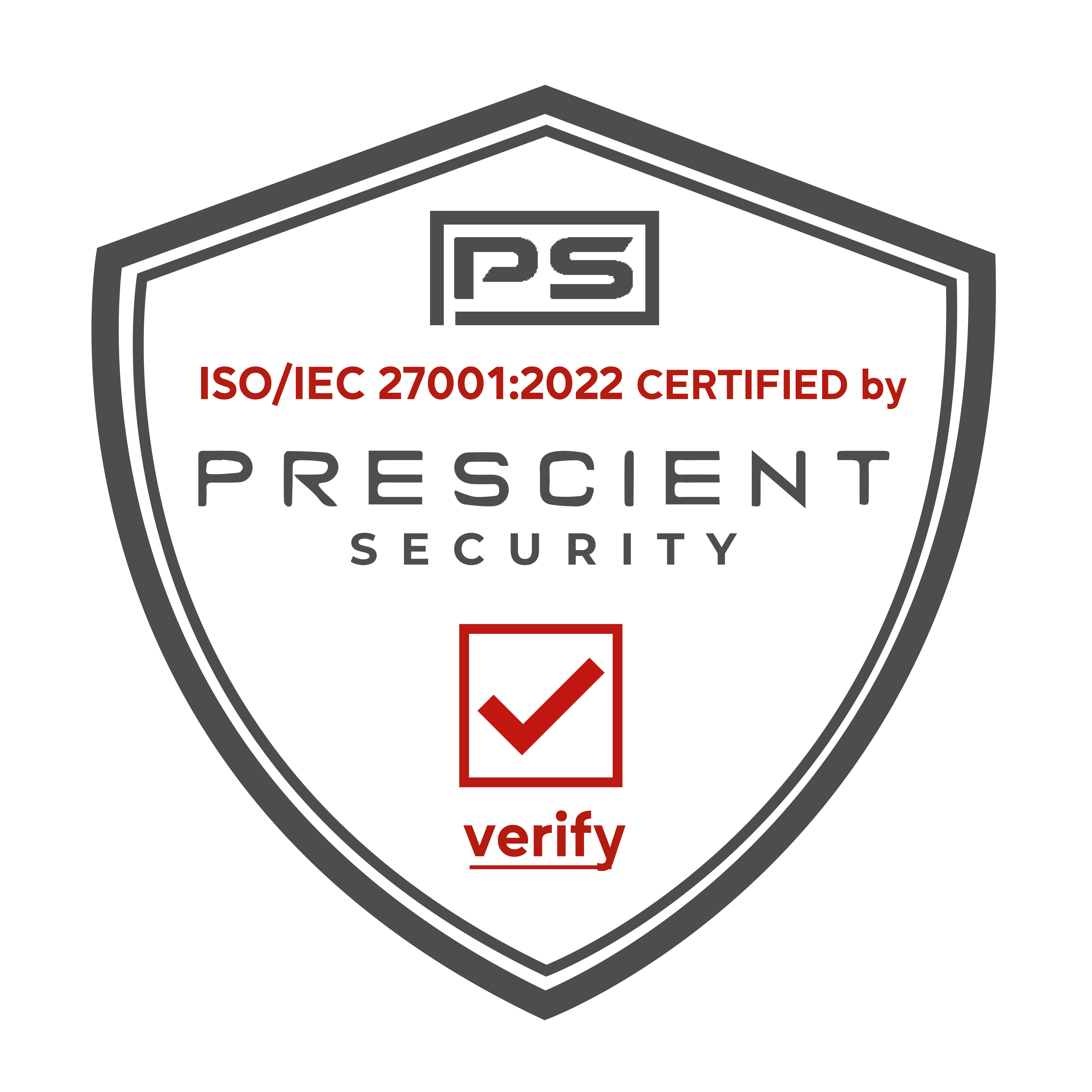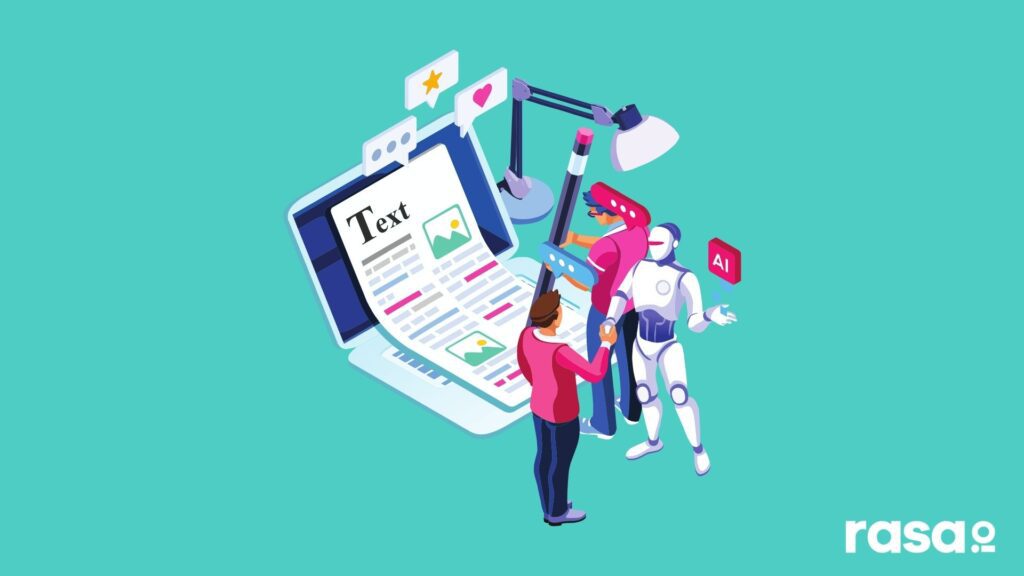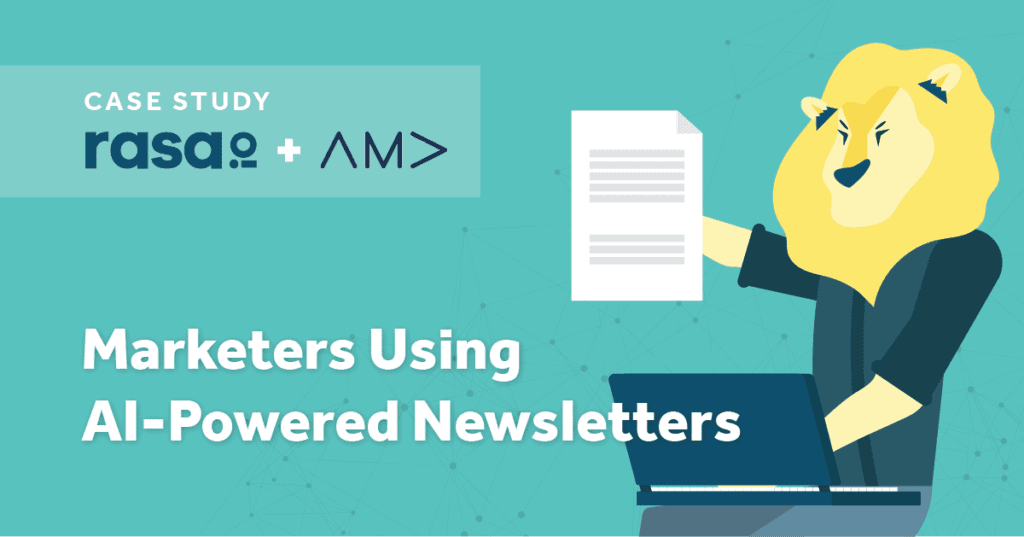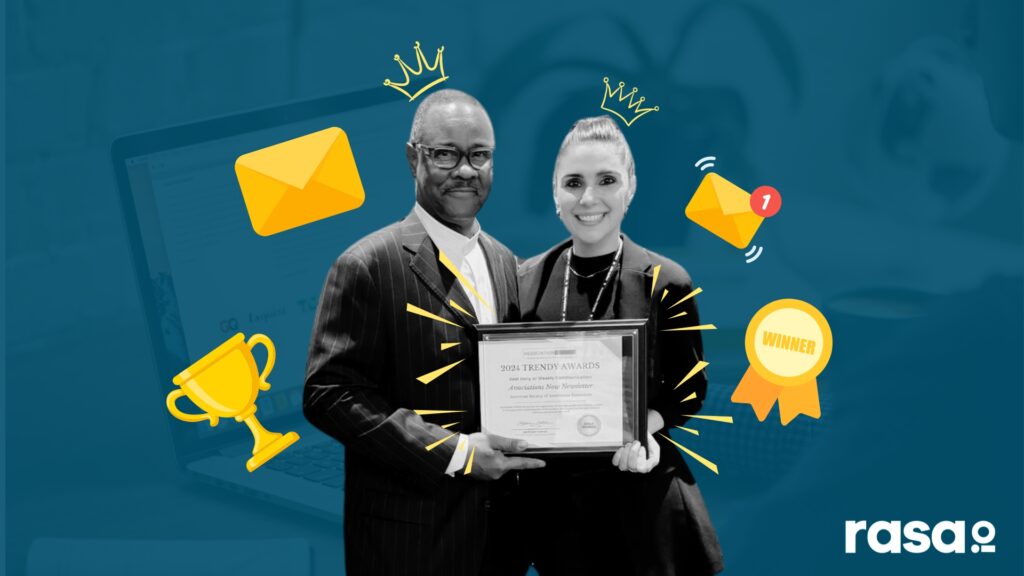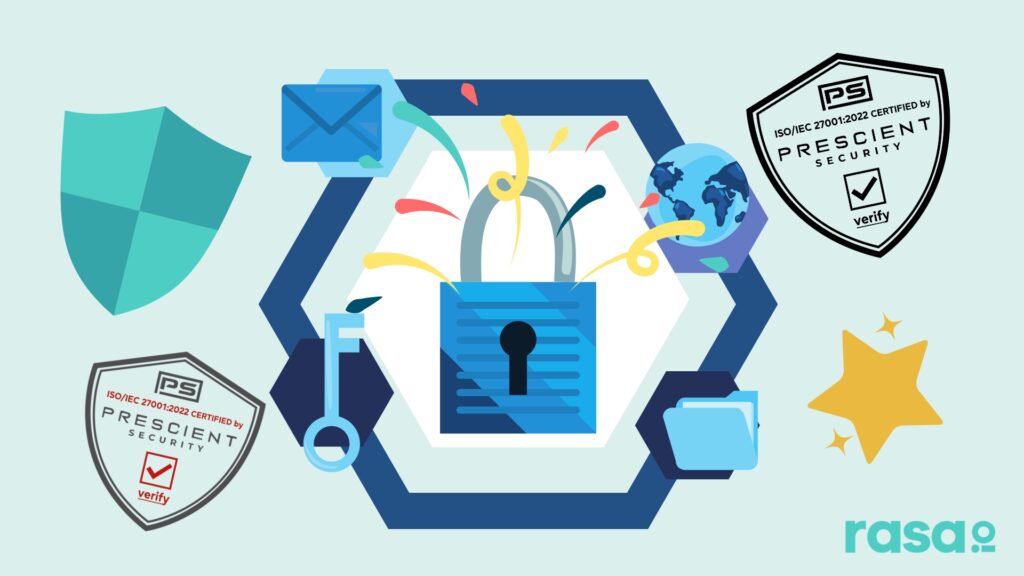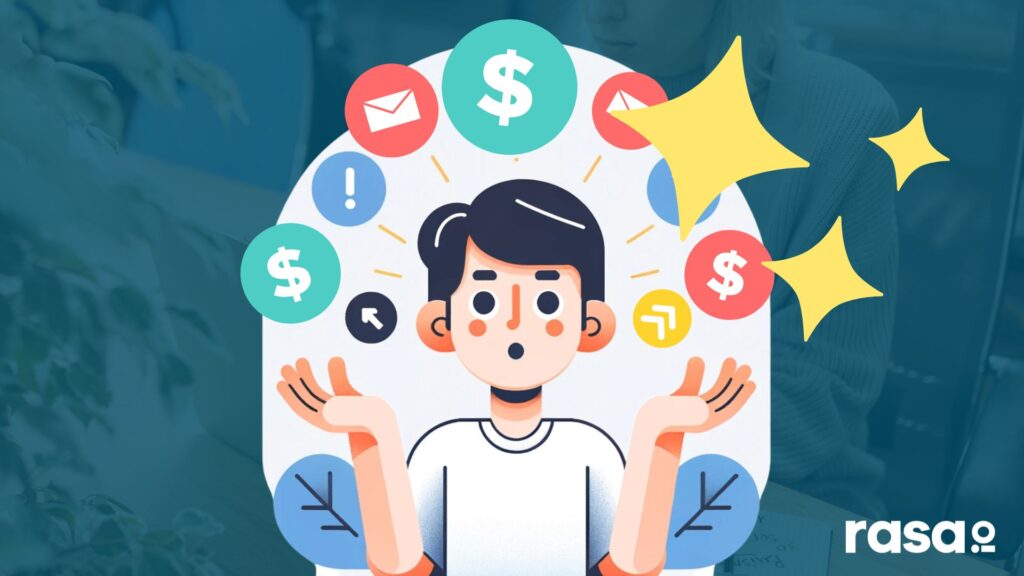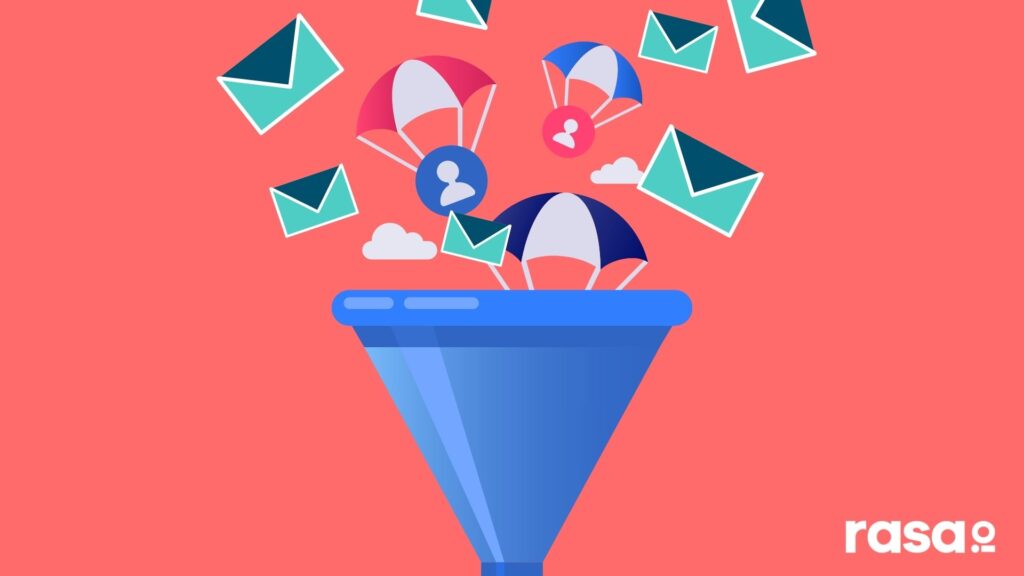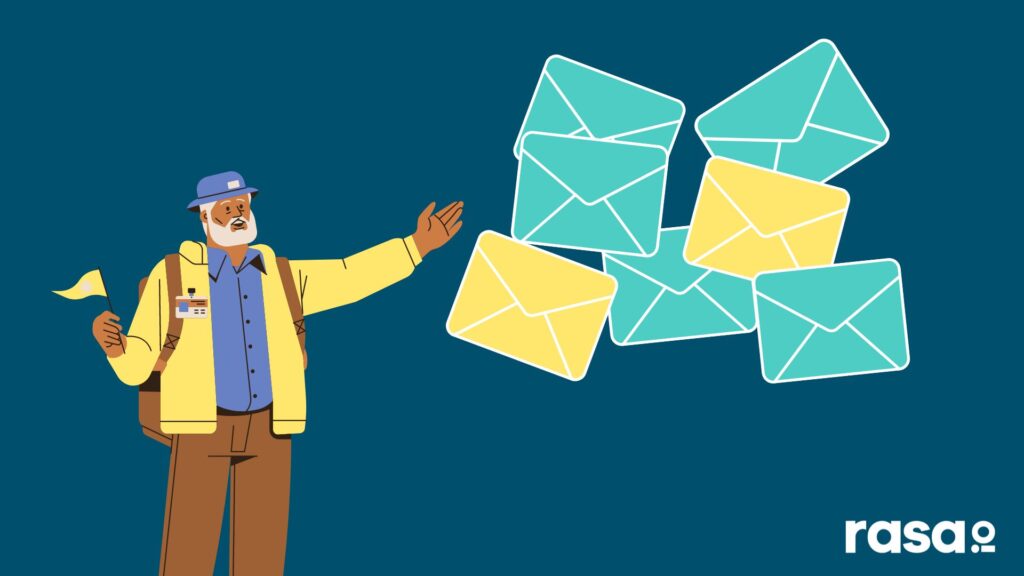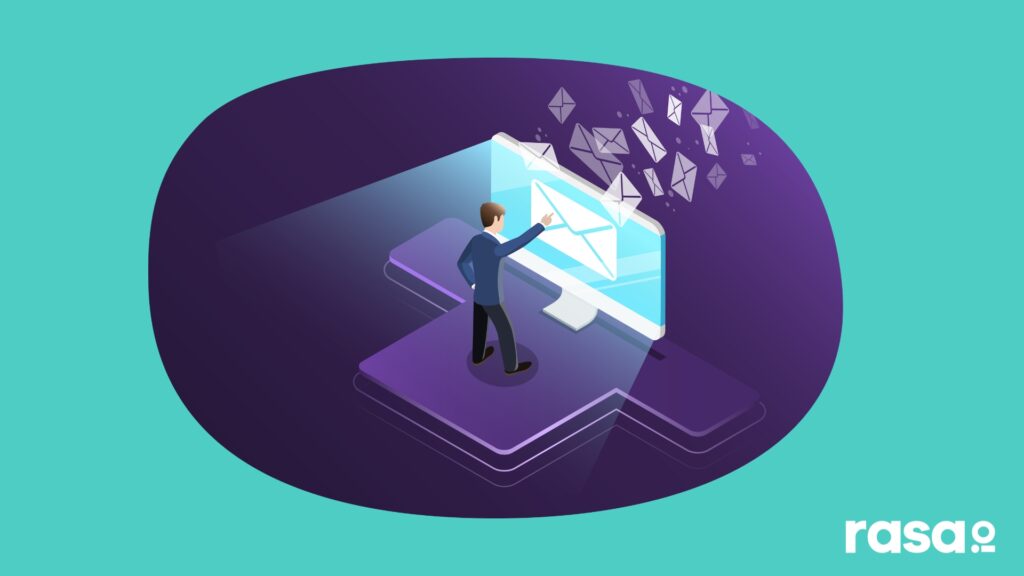Joanna Wiebe
On today’s show, listeners will hear how a renowned copywriter teaches others to sell and promote with email. For Joanna, email is the direct path to revenue for every business, especially because it is a much cheaper and less time-consuming way of reaching your audience than many other mediums such as podcasting and blogging.
Joanna educates listeners on the difference between direct mail and email, what direct response entails, and she gets into the factors that make or break an email campaign, including the relevance of the content and the timing. She gives pointers for writing sales-based emails that are interesting and that keeps the reader curious without resorting to cheap tactics like clickbait. But she warns marketers not to let the fear of being sleazy stop them from writing groundbreaking emails and suggests they should test different approaches with their audience. Joanna also shares how you can use storytelling skills to write effective emails and explains why getting everything out on the page is better than editing in your head as you go.
Key Points From This Episode:
- Hear why email provides an instant payoff that is seldom seen in other mediums.
- Keeping in mind that, while other mediums could work, they will likely cost you more.
- The difference between direct mail and email and the role of our impulse to keep clicking.
- An explanation of what direct response involves in the context of marketing.
- Relevance and other factors that determine whether a sales-based email succeeds or fails.
- Find out about the crucial part that email has played in Joanna’s copywriting business.
- Advice for writing sales emails that aren’t sleazy and testing your audience’s response.
- Writing interesting emails by paying attention to what is interesting and current in the world.
- Using storytelling skills to keep your email audience interested and wanting to know more.
- Why you have to write down everything that comes to mind and do the editing later.
Tweetables:
“There is a direct path between sending an email and making a sale. It is harder to make sales without sending emails.” — @copyhackers [0:01:52]
“The most ideal, if you are trying to get an email to convert, is increased relevance. Relevance is everything—but it’s hard.” — @copyhackers [0:05:50]
“The fear of being sleazy keeps so many marketers from doing breakthrough work.” — @copyhackers [0:11:36]
“Great, readable copy doesn’t happen on the first take. The first take is supposed to be ugly.” —@copyhackers [0:20:15]
Links Mentioned in Today’s Episode:
Episode Transcript
Joanna:
The greatness of direct response and the opportunities there in thinking about email, like a direct response marketer would where like sales opportunities kind of just open wide. Like there’s now it’s not just this scary space where you’re afraid to you know, as you say, like to push send you’re you’re going to do it because you know, that it’s very likely to actually bring in revenue and everyone’s going to think you’re a rock star for it. So, yeah. Yeah. I find it like exciting to take the best of direct response. And then like what we know about digital and bring the two together and see what happens.
Bryan:
From rasa.io, the free tool for sending smarter and better email newsletters. This is Pushing Send, a show featuring people who send emails their subscribers actually want to read. I’m Bryan Kelly and on today’s show how a renowned copywriter teaches others, how to sell and promote using email. Here’s Joanna Wiebe explaining why email is the direct path to revenue for every business. I read a quote where you said email provides an instant payoff compared to other things such as podcasting and blogging or even public speaking. Can you tell me why you believe that to be the case?
Joanna:
Oh yeah. I mean email from what I’ve seen and we’ve worked with lots of different businesses and grown our own, and all businesses are email businesses. Not all businesses are paid ad businesses or webinar businesses, but there’s a direct path between sending an email and making a sale. It’s harder to make sales without sending emails. In fact, when it’s time for you to generate revenue more often than not, you’re likely to look to emails like, can we send an email to sell X? We have a new campaign. What’s our email strategy. We’ve just put together a new, you know, lead magnets. We’re going to drive Facebook ads to it. But once they opt in what’s what are we gonna do with email? Like we, every thing in my experience comes back repeatedly to email. And if it’s not always email, I know some people are like, well, we do SMS. And we do lots on our site and that kind of stuff. It’s like, yeah. But if you really want to make money, just like cut all that crap out, just stick with email. So, yeah, that’s why I just believe so completely in it. When I look at our clients and I’m talking B to B software as well as B to C eCommerce, when we’re going through how things are performing time after time, after time after time, if you wait, there’s a spike in sales, it is almost without fail because you sent an email that day. So email is just the it’s the direct path to, to making money.
Bryan:
So back in the day, they used to send direct mail, right. And email is very similar in that it is direct response, as you mentioned a moment ago, but what do you see as the difference between the two?
Joanna:
My take on it at least is that it is digital direct response. So the things that are like direct response are still direct risk. Like they’re still there, they’re still in place. The one-to-one nature of that. Having a single message, a one thing for them to do really optimizing your offer. It’s just the digital side of it is kind of the complicating factor because it typically means that we’re dealing with, and I say this all with like an asterisk next to it, but we’re dealing with faster moving people who want the click, where, you know, like people like clicking things, people like tapping on their phone. They like doing that action. And so it’s an awkward thing to sit in a digital space and just keep reading where, you know, we’re hungry for the next click. And so that’s where I, for me, it’s like, okay, well, that’s how it differs from traditional direct response where you could send out a mega log, let’s say like a big catalog. That’s just a big sales pitch. And you could send out multi page mailers that have inserts and all sorts of other things on them. And that’s because there was nothing to click. There was like that wasn’t an action that somebody had to take there. But now we are dealing in a world where you’ve got like a trigger finger and that’s like ready to go all the time. And so that’s where I think email has to be more adapted to digital. Then leading towards a direct response, like the history of direct response, take the best of direct response and then make it work in a digital world.
Bryan:
For anyone listening, who may not know exactly what direct response marketing is or confuse it with direct mail. Can you explain it?
Joanna:
Yeah. It’s basically a one to one cut out the middleman approach to getting usually at least a sale. So it’s a direct response you typically had to respond to it. But yeah, it was just a one it’s marketing that’s meant to feel one-to-one so not an advertisement, but something, and it was true. A direct mail piece is part of direct response. Absolutely. Like something that goes to your house. Yeah. Direct response is the marketing that you do. That’s meant to drive an action. That is a clear explicit action. And it feels one-to-one like, you’re speaking me and you rather than we and they stuff like that.
Bryan:
That’s a really great point. If you’re not speaking to individuals in your email, it’s probably not working. So what do you think makes a sales based email succeed or fail?
Joanna:
Most ideal if you’re trying to get an email to convert is increased relevance. So relevance is everything. It’s just hard. It’s also not, it’s so hard, but that’s a hundred percent time after time. We see data shows that the more relevant that email is to the recipient, the better that’s like number one. And you know, shortly after that, after increasing relevance with like segmentation, you know, conditional messaging, personalization, all those things we can definitely talk about after that is of course, you know, timeliness and that’s directly tied to relevance. Like if I’ve just signed up to hear from you, I still am interested in you nothing’s really necessarily cooled down for me yet in this relationship that we’re starting to establish. Are you sending them something when they’re very interested in that, like most seducible moment, like the honeymoon period after someone signs up. So that’s where that can help a lot with sales, the newer someone is on your list, the shorter the amount of time they’ve been on there, the more likely they are to buy versus someone who’s been on for seven months and hasn’t purchased anything yet. If they stay on, then we’ve seen a data that, you know, three years from now, if they’re still on, they might buy. But if they didn’t buy right away and they’re unlikely to. Timeliness is a big part of that relevance. And especially of course it becomes less and less relevant to me and offer will become less relevant as I move further and further away from that point of pain or a dream state, I was seeking that’s. That was what drove me to sign up for your list in the first place. So those are the two big ones, relevance and timeliness. In my experience.
Bryan:
Speaking of your experience, how important is email been for copy hackers, your business?
Joanna:
Not very. Just kidding. Yeah, no, it’s been everything so much to the point that I’m working with my team right now on restructuring everyone’s roles to focus entirely on email. So the parts of email, like who’s in charge of building the list who is in charge of segmenting the list and who’s in charge of converting the lists and then the things that fall underneath those nature categories. But when it comes down to it, every part of the copy hackers business is dependent on it. We do course lunches. Like we teach people how to write copy, and they’re all dependent on us having an engaged list that cares about what we’re selling. So we’re sending them relevant messages and we can’t, we would never, there’s no such thing as a campaign for copy hackers that doesn’t have email at the heart of it, right? We, we might keep the same sales page over multiple launches of a single product, but we’ll rewrite those emails every time we’ll work differently on those emails every time. And for me, for our business that been at the heart of like we’ve grown from doing smaller course launches that were totally email driven to, you know, where we did make like, Ooh, $30,000 per kid. But that was when it was just me, but now we’ve got a bigger team and more people to support. And so, yeah, we have much bigger launches these days to the point of having like seven figure launch windows instead of, you know, five figure launch windows, both of which are good, but neither of which would happen without email. So we’re all in everything we do is email. It’s hard to it’s so unspecific to say that, but that’s just because it’s like, it’s everything. It’s like the air we breathe, it’s hard to describe, but if you took email away from us, you would take our business away from us.
Bryan:
When we come back, what Joanna recommends to avoid coming off as sleazy when writing a sales based email, plus Joanna offers some practical, concrete ways to write engaging emails that can help us avoid the trap of coming across as boring to our subscribers. I’m Bryan Kelly, and you’re listening to Pushing Send from rasa.io.
rasa.io:
Creating email newsletters takes a lot of time. You might curate articles, write content, tweak your template, and look up metrics and not to mention you’re probably doing all of this once a week. well at rasa.io, we said enough and built a free tool to simplify the process, which saves you time. It also uses AI to personalize emails for each subscriber based on their interests. That means they get stuff they like to read. Want to see how it works? Visit www.rasa.io and click how it works.
Bryan:
Welcome back to Pushing Send, I’m Bryan Kelly. Joanna Wiebe has been writing email sales copy for a long, long time. And she knows exactly what to test and experiment with, but it doesn’t have to be a complicated process. If we understand a few simple truths. In fact, here’s Joanna sharing a few of those simple truths with me. How do you suggest someone go about writing a sales email in a way that isn’t sleazy
Joanna:
Just don’t be sleazy. Stop being a jerk? I don’t know. Just kidding. I think the fear of being sleazy keeps so many marketers from doing breakthrough work. This fear that, Oh, I once had this one encounter and it has led me to think direct response never works or we shouldn’t sell. So I think this fear that gets in the way of marketers that they’re going to come off as sleazy chances are super duper good. You’re actually not going to like, if you have the fear that you will be sleazy, you’re probably already in good shape. It’s the people who aren’t afraid of that that are the problem. So yeah, the way to overcome it is to look at really good data out there about how these tests performed, don’t perform. And of course, to do your own tests as it is. So email is really easy to test in sending an email test of a subject line of, from name a multiple parts of those things. And of course, body copy and different CTAs might have for an email. That’s an easy thing to test. You can send one version of an email where the body copy pushes a little harder than might be uncomfortable for you. And the other one doesn’t push as hard, but it sits more in your comfort zone and you can see how your audience responds to it, go into it, knowing that your goal is to grow the business because that’s why you’re there and growing the business, not just for the sake of it, but because you’re connecting customers with value that they’re seeking
Bryan:
Yeah, that’s really good advice. So what are a couple of practical ways we can do this?
Joanna:
If you’re afraid of being sleazy one, I don’t blame you, but to get over it and like try, try testing something that makes you uncomfortable, not off-brand uncomfortable. So not using language that feels wrong, just like it’s the wrong tone. It’s got all caps. It’s maybe toying with like visuals and word pictures and quote unquote fear-mongering that you don’t, you don’t need to do that. Great direct response happens all the time, all around you. Many of the things you’re buying are using direct response to get you there. And that means Facebook as in particular, that’s a huge, huge opportunity. That’s where a lot of direct response is happening really well. And again, it feels more one-to-one there, even though it’s closer to like an advertising, cause it’s technically advertising, but it has more of like the one to one qualities of direct response and most think of all the things that you at least click through on Facebook. A lot of that is using the best of direct response. And you can do the exact same thing, like tell an engaging story, open with a hook open wutg something that matters to your prospect, which of course requires that you know who they are. And if you think you’re going to get away with writing an email that’s supposed to sell without you knowing who the person on the other end is your say your email won’t sell. And that’s how things feel sleazy because you’re making big generalizations about your audience. You’re like, Oh, all teachers want to hear this. Well, all teachers aren’t the same. There are different types of different thinkers inside all of those. And it’s a better understanding who’s there and segmenting your list and then sending targeted messages to each of those groups of people will help take away from this fear of being sleazy. You’re not sending a sales email, that’s filled with big, bold black, all caps texts, and it’s got yellow highlighting and red writing. And it somehow makes you feel bad about yourself. By the end of it, we’re talking about sending really nice relevant messages that connect this person who should be buying from you with the thing they should be buying from you. There’s nothing wrong with that. That’s commerce. That’s the world we live in, what marketers exist to do. So there’s nothing sleazy in my opinion about it, unless you make it sleazy.
Bryan:
Totally. Yeah. I completely agree. Now, how do we go about avoiding writing a boring email?
Joanna:
If you’re boring, don’t write it. Just kidding. Just kidding. I’m a terribly boring person. When it comes down to it, one of the biggest tricks is start by telling something that you believe would be interesting. And typically it’s not going to be something that’s interesting to you. It is going on listening to people like what’s interesting story that a customer told you and they didn’t have to tell it to you directly, but what did you see in Facebook with something they were going through something that was hilarious or something that was painfully sad or whatever, like the things that made you feel something like emotion is such a huge opportunity for marketers to use more than we do. But yeah, when it comes to like go out and listen for things that are interesting rather than staring at the screen and going, like, I don’t know, because you probably don’t know unless you’re a natural born storyteller who like weaves incredible tales and keeps everybody on the edge of their seat, which is very hard to come by and typically takes like such an incredible amount of training and constant practice that you end up like, you know, Kevin Hart and you’re well known for like always telling incredibly funny stories, but in the absence of that, not that that can’t be you. That could also be you too. But if it’s not in the event that it’s not, then what are some interesting things that you’ve heard other people say, and you don’t necessarily have to tell their story in there, but think about the qualities that made it interesting. It opened with a hook like you were like drawn in immediately. There was a curiosity gap that you just had to close it moved quickly. The pace was really fresh and lively, or it was like slow and deliberate and like drew you in and making you curious at every step. So most of us are guilty of being boring when we let ourselves do a lot of preamble or when we complete a story in a single space. So like when you’re reading a novel, that’s meant to be a page Turner. You’ll see, of course that the chapter doesn’t end at the end of the story for that chapter, the scene doesn’t close at the end of the chapter. That’s for more dramatic, thank you books. The ones that make you move through something have this chapter ends at like the climax of that moment. Something crazy is about to happen end chapter, and now you have to move into the next chapter and that’s like, okay. So in storytelling, we don’t end in trying to get a click in an email. You don’t necessarily want to give everything away in the email. And that doesn’t mean you’re drifting into clickbait. It means you’re like opening up. You’re using something to begin telling something interesting that gets people reading along and curious like, Ooh, what’s going to happen next, but you can do this. And then just don’t end your story in the email, satisfy the ending elsewhere so that they do click so that they do get in the habit of clicking. And they see that resolution on the next screen that follows. And oftentimes it can be good when you’re trying to find your hook to complete the phrase. I never thought it was possible, but, and then read your sentence after that. So I never thought it was possible, but as a signal for you as a writer that you are about to tell something really interesting.
Bryan:
Can you share a concrete example of how this might look?
Joanna:
I just opened this email randomly. I’m not going to say who it’s from because it’s not their fault, but this happens all the time. So the opening line is customer messaging is a crowded marketplace. Okay? So if I first go, I never thought it was possible, but customer messaging is a crowded marketplace that does not pass the test. That is not a hook. That might be something that you think is interesting. But chances that someone is actually going to read an entire email that doesn’t even hook them from the beginning. Not great, not great. So we want to go through instead and put that line in. Like I never thought was possible, but in front of every single sentence you have in there, and only when you arrive at a sentence that actually completes that phrase well, where you’re like, Oh, I didn’t think that was possible. That becomes your new hook. Everything before it gets cut, it might get moved to a different place, but you reorganize your emails so that the opening line completes the phrase. I never thought it was possible, but that’s a quick and dirty way to actually start making your writing for your emails. More interesting and more likely to hook people.
Bryan:
It’s such a simple, practical little thing, but oftentimes what’s simple. Isn’t always easy. Is it?
Joanna:
It’s tough, right? Writing and something that’s engaging is a scary thing to do. You start writing it in your head when you should be writing it on the page, just like let stuff fall out of your hands, directly into the keyboard without editing it, just throw it all down. Great. Readable, copy. Doesn’t happen on the first take, the first take is supposed to be ugly. The first thing you throw down on the page should be all of the thinking. All of the thoughts, just like throw them down. If you’re editing in your hands before you actually put things on the page, then it’s unlikely to actually be interesting. Editing happens in like you’ve gone through, I’ve thrown everything on the page and I’m going to go through and we’re going to look for my hook. What, in everything I’ve written here, what completes the, I never thought it was possible, but which one does that? And they’re good. Now I’ve got what I think might be my hook. I’m going to take it from there and write from there, but just know this has been my experience over many, many, many, many, many, many years of writing copy that, that first draft, if you think, wow, that’s a great first draft. You probably did it wrong and should throw it out and start again. The first draft has to be ugly. It has to be a mess. That means you haven’t edited it. And it’s more likely that now you can go in and what we call edit in the awesome, like that’s when the great stuff happens during editing. But if you’re like staring at the blank page and trying to write everything in your head first, it’s not going to work, throw it on the page and then figure it out from there.
Bryan:
Along those lines, there’s also a huge opportunity to use story, to convey why someone should care about our offer or what it means to them.
Joanna:
Well, it does feel like it’s the biggest like gap in most of the marketing, like email marketing that a lot of us are doing. And when we add more story, which does require typically more words, and that’s one of the reasons that a lot of marketers don’t feel comfortable sending it with this whole giant myth that nobody reads online, it makes it difficult. So you end up cutting out a lot of the good stuff from your emails. And that doesn’t mean that you should tell the story of, Oh, you’re looking for this shoe in order to go to this like dance. I don’t know. It’d be difficult to know that. And if you knew that if you knew that somebody was like looking at your shoes, because they have a dance to go to, if there was some way we had data to tell them that I guarantee you that email would convert like a mofo. And so in the absence of having that data, then you can’t tell specific stories. So instead we tell no story at all. We’re like, well, just put a picture on there. Like a nice picture of the shoe. Maybe make it a gift. Everybody likes gifts. And that’s like our big ideas, right? And then like, Oh, discount the price and send them over here. It’s a buy one, get one sale wah wah. And like, that’s what you think email is, but it can be so much more than that. It’s just, it’s difficult. It’s admittedly very difficult for marketers to be able to get to that level of specificity in their storytelling, because we don’t have the data to say here’s what’s going on in my life. And here’s why I’m thinking about buying this shoe in the first place. Or here’s why I signed up for this project management software in the first place. Here’s the first thing I need to do. Here’s the type of project I’m working on. Well, we don’t know that going into it. How are we supposed to send relevant emails? And then how are we supposed to believe in email if we’re not sending relevant emails and thus we’re not seeing the same kind of conversion rates that were kind of promised when it comes to email.
Bryan:
Joanna’s expertise has come with a ton of trial and error over her career. Not to mention all that she’s seen teaching others. Hopefully her simple practical insights inspire you to try something new, something that might not be as easy as what you’ve been doing, but will lead you to write less boring, more engaging emails that turn subscribers into customers. Coming up on our next episode, we’ll hear from John Lee Dumas, one of the most prolific business podcasters whose transparency and authenticity has helped him generate nearly $20 million since 2013. He shares his earliest email newsletter experiences and discusses how critical it’s been to the growth of his business. Despite his entrepreneur on fire podcast, being the crown jewel of the whole enterprise. You won’t want to miss John’s story. So if you’re listening to Pushing Send for the first time, be sure to subscribe at Apple podcasts or wherever you’re listening. So you don’t miss an episode. And if you’ve enjoyed what you’ve heard, I’d encourage you to leave a review. It’ll help us share these stories with others, just like you. So thanks in advance for doing that. I’m Bryan Kelly, and you’ve been listening to Pushing Send from rasa.io.







